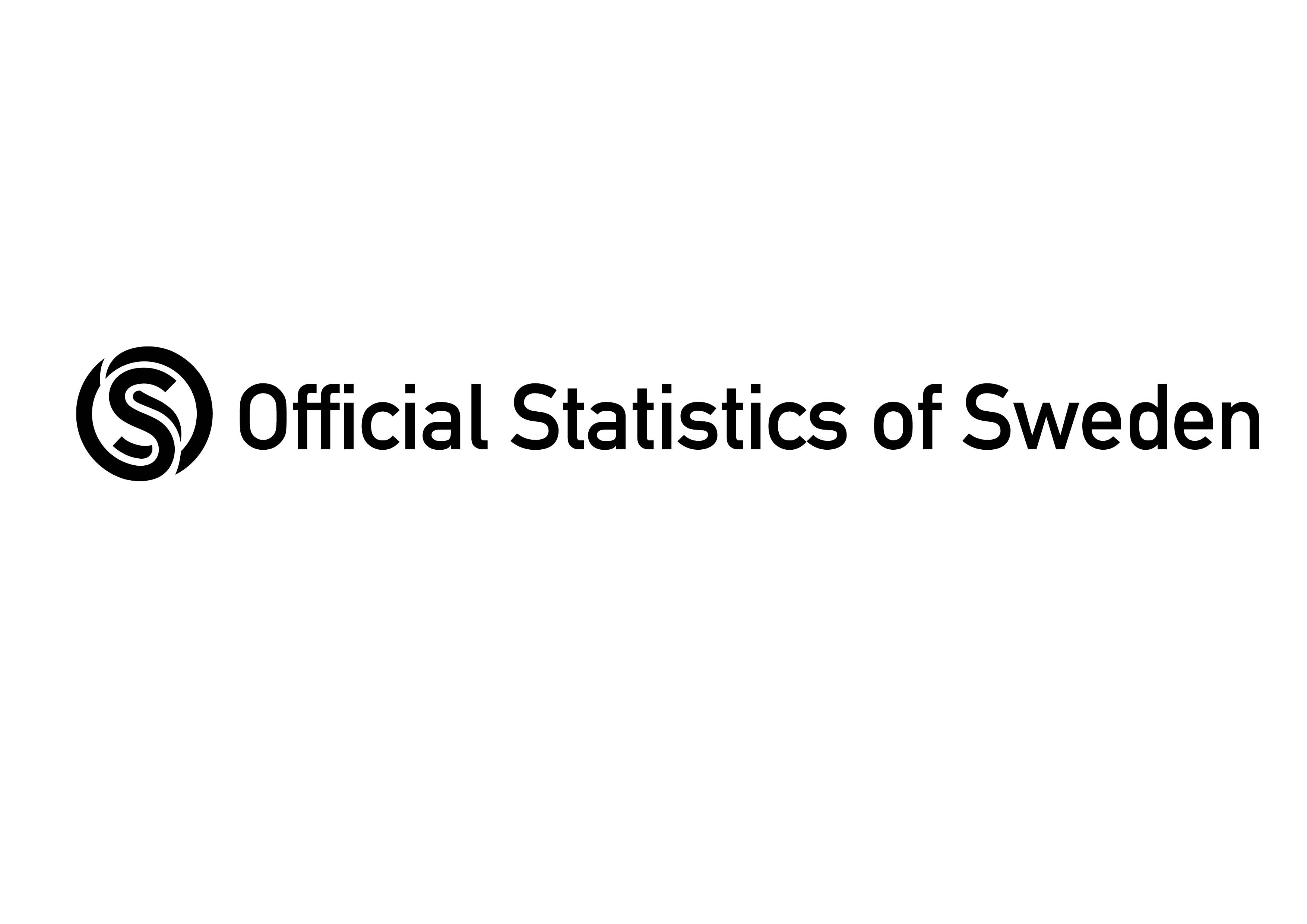Fish in Watercourses
Official statistics for Fish in Watercourses.

Of the 29 trend watercourses surveyed during the period 2007-2021, 25 had annually a fish fauna that matched the natural conditions of the watercourses well (good or high ecological status). Between one and five of the surveyed watercourses had, in different years, a slightly deviant fish fauna (moderate ecological status) compared to expected values, while unsatisfactory status was noted on six occasions throughout the entire period.
No General Trend
The catch results did not show any general trend indicating an ongoing change in the fish fauna of the watercourses. However, two watercourses showed a deteriorated status in 2018 compared to previous years, and one watercourse showed a deteriorated status in 2019 and 2020. This is most likely due to the very dry and hot summer of 2018. All three returned to normal values in 2021. One watercourse, Vretaån, showed a deteriorated status in 2021 (moderate) compared to previous years (2014-2020) when its status had been good. Vretaån has previously (in 2010 and 2013) shown moderate status. It is unclear what this is due to, but we can see that not all sampling stations show the same assessment: two out of three show moderate and unsatisfactory status, while the third shows good status.
To detect and monitor large-scale impacts, such as climate change and the deposition of acidifying substances, quantitative fish surveys (electric fishing) are conducted annually in a number of selected trend watercourses distributed across different geographical regions and water districts, as part of the national freshwater environmental monitoring programme.
The selected watercourses are generally unaffected by local emissions and represent relatively unaffected small to medium-sized watercourses in Sweden. The assessment of the status of fish stocks includes the parameters required by the Water Framework Directive for assessing the ecological status of fish fauna. This means the survey covers indicators of the fish community's species composition, individual density and biomass, as well as the size distribution of fish. For salmonid fish, such as salmon, trout, and grayling, a division into two size classes (yearlings and older fish) is therefore made.
The Watercourse Index (VIX) used for assessing the ecological status of fish fauna includes six indicators (density of salmon and trout, proportion of salmonid species with reproduction, proportion of tolerant species, proportion of intolerant species, proportion of lithophilic (hard-bottom spawning) species, and proportion of tolerant individuals).
Since the fish fauna in watercourses naturally varies with the size of the watercourse, geographical location, altitude above sea level, annual average temperature, type of trout population, slope of the watercourse, and the proximity of the survey site to lakes, these factors are also considered when assessing the ecological status of the fish fauna.
Most Watercourses Have Good or High Status
The number of trend watercourses surveyed during the period 2007-2021 is 29, with exceptions for 2011 and 2021. Based on the average value of the Watercourse Index (VIX), 25 watercourses had a fish fauna with good or high ecological status according to the classification of the Water Management Ordinance throughout the entire or most of the period (see diagram). This means that these watercourses have a fish fauna that corresponds relatively well to the natural conditions of the watercourses. High status means that the indicators deviate very little from the reference values, while good status indicates a small deviation.
The watercourses that had, on average, a fish fauna with high ecological status were Muddusälven, Vapstälven, and Skärån. Muddusälven drains Muddus National Park, and Vapstälven is an unaffected mountain watercourse in Västerbotten. Despite Skärån being located in Skåne, it is relatively unaffected in its upper parts, thanks to the fact that the majority of the catchment area lies within Söderåsen National Park.
Of the surveyed watercourses, Anråsälven and Virån, on average for the period 2007-2021, had catch results and index values indicating a deviant fish fauna with moderate to unsatisfactory ecological status. Virån has had moderate status every year except for 2017 when it was good, and Anråsälven has varied between moderate and unsatisfactory status, except for 2012 when it was good. Oradbäcken has also consistently shown moderate status over the past five years. In the 2021 electric fishing survey, four watercourses – Anråsälven, Oradbäcken, Virån, and Vretaån – had moderate status. For the period 2007-2021, the catch results do not show any general trend in the ecological status of the fish fauna in the trend watercourses, except for a deterioration in Oradbäcken with a longer period, five years, of moderate status.Formulärets överkant



